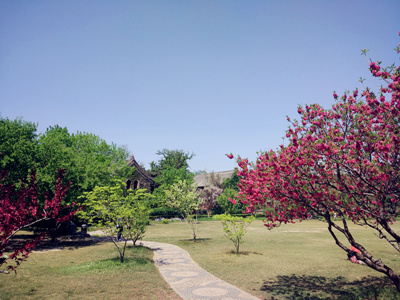Full coverage: Panview欄目“ Belt & Road, China's bridge to the world"
By Maximilian Römer, Yenching scholar at Peking University

After the 2016 political earthquake, the United States started a gradual retreat from global climate action. Now, more eyes are turning towards China, which stands poised to become the new driving force to implement environmental and energy policies.
Having revised environmental energy laws in 2015 and pushed for further implementation of wind and solar energy, Beijing has taken steps to tackle environmental issues at home. The International Energy Agency reported that China has accounted for nearly half of the newly-added solar PV (photovoltaic) capacity in 2017, more than the US, Europe, and Japan combined.
Nevertheless, in the face of an economic growth slowdown at home it will likely be a more challenging task to balance the transition from coal to renewables.
As the most significant Chinese policy initiative in modern history, the Belt and Road Initiative (B&R) holds the potential to become the decisive factor that determines the future of renewable energy and the environment in the region.
Considering that the multi-trillion US dollar initiative aims to largely invest in energy and transport infrastructure throughout Eurasia, it is puzzling that so little attention has been given to the possible implications on the environment. After all, the Stern Review (2006) found that about 50% of global energy emissions originate in transport, industry, and power related sectors.
So, the question that must be addressed: How important are climate change reduction efforts in the list of priorities to develop the B&R? The answer remains as vague as the conceptualization of the initiative itself. For now, we can only give an outlook on possible risks and opportunities that could help to push climate change further up on the policy agenda.
Estimates predicting an annual increase of 5% in steel and 25% in cement output in China until 2020, due to B&R-related demand for infrastructure and pipeline projects, illustrate a rather grim outlook. Such investments in high carbon infrastructure is likely to accelerate greenhouse gas emissions, which could have a devastating impact on the environment in Western regions of China such as the Himalayas or Gobi Desert, as well as on other parts of Central Asia.
Recently, local scholars from Chang'an University in Xi'an have undertaken efforts in researching risks to the regional environment. They point to concerning outcomes for glaciers in the Himalayas, or issues of intensified water scarcity and desertification in a region that remains understudied.
On the bright side, the Chinese leadership has not turned a blind eye on such issues. During the inaugural Belt and Road Forum in Beijing in 2017, President Xi Jinping urged for a green investment strategy with regard to the Belt and Road.
Specific climate measures proposed during the Forum include the creation of a data service platform on ecological and environmental protection, and the formation of an international coalition for green B&R development. Yet considering how heavily Chinese companies invest in coal power along B&R countries, it remains uncertain how such measures will be implemented effectively.
But given the opportunity for China to fill up the vacuum, since the US had departed from its climate leadership, we can expect to see much more emphasis placed on measures to create a green B&R strategy, which would demonstrate a positive signal for the wider region and global community.
(The opinions expressed here do not necessarily reflect the opinions of Panview or CCTV.com)

Panview offers a new window of understanding the world as well as China through the views, opinions, and analysis of experts. We also welcome outside submissions, so feel free to send in your own editorials to "globalopinion@vip.cntv.cn" for consideration.
















